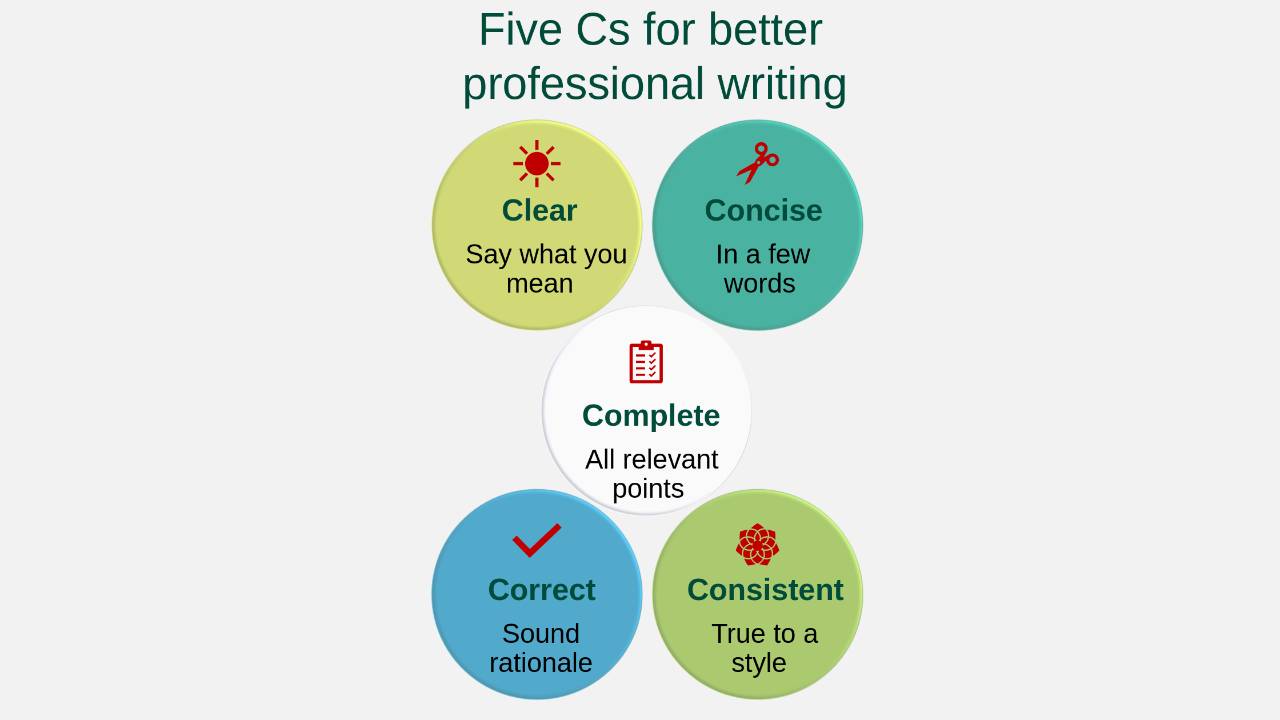Ricardo's Five C's for Better Writing: A Brief Guide for Professionals
Nov 26, 2025
Written by Dr. Ricardo N. Calvo one of the amazing coaches in our Trusted Coaches Network. Learn more about him and his approach to coaching here.
Whether you are drafting a report, proposal, email, or LinkedIn post, good writing must help your readers understand your message effectively. In my writing, I abide by one principle: your writing will be better for your readers if it is clear, concise, complete, correct, and consistent.
Let us briefly examine how these principles work together to help your reader understand your message.
1. Say what you mean and your writing will be CLEAR.
Help your reader by saying what you mean. If your reader has to guess or interpret what you are trying to say, you will lose them. Clear writing avoids ambiguity, uses familiar words, and gets to the point. Do not be afraid to make your message accessible and unambiguous.
Tip: Use active voice, avoid jargon (unless your audience expects it), and define terms when needed.
2. Use as few words as needed and your writing will be CONCISE.
Concise writing respects your reader’s time. It trims the fat without losing meaning. Every word should serve a purpose. Your writing does not need to be brief at the expense of meaning, but it should be precise.
Tip: Eliminate filler words like “very,” “really,” “just,” and “in order to.” Replace long phrases with shorter equivalents (e.g., “due to the fact that” → “because”). When I edit reports, I often find that I can cut existing filler words and not lose any relevant information in a sentence or paragraph.
3. Include all relevant points and your writing will be COMPLETE.
Provide your reader with all the necessary information to make your argument and support your conclusion. Avoid making the reader wonder how you reached a conclusion.
Tip: For example, if you are writing an informative or persuasive piece, ask: “Have I answered the who, what, when, where, why, and how?”
4. Connect your points through a sound rationale and your writing will be CORRECT.
In professional writing, we are expected to be experts in our field and, therefore, we must base our arguments and conclusions on sound data, reasoned interpretation, and credible references. Even if you are introducing a new idea or proposing a new explanation, make sure to distinguish between what is supported and what is your interpretation. This distinction enhances the reader’s trust in your analysis. In professional settings, correctness builds credibility.
Tip: Double-check your data, cite your sources, and ensure your conclusions follow logically from your premises.
5. Stay true to a style and your writing will be CONSISTENT.
Consistency makes your writing more professional and easier to follow. This includes tone, formatting, terminology, and punctuation. Inconsistent writing distracts the reader and undermines your professional credibility.
Tip: Use a style guide (like APA, Chicago, or your company’s internal guide) and stick to it. Be especially mindful of how you capitalize, number, and format headings or lists.
Final Thoughts
Effective professional writing is the result of deliberate choices guided by clear principles. By focusing on being clear, concise, complete, correct, and consistent, you will communicate more effectively and stand out as a thoughtful, credible professional among peers, supervisors, and clients. Would you like to improve your team’s writing or refine your own? Let’s connect: [email protected]
Disclaimer
The five writing characteristics presented here—Clear, Concise, Complete, Correct, and Consistent—are based on my own professional experience and practice. I developed this specific formulation independently as a practical guide for improving writing quality. However, I acknowledge that similar principles have been widely discussed in communication and writing literature.
For example:
- The 7 Cs of Effective Communication include clarity, conciseness, completeness, and correctness as essential elements of impactful communication.
- The 6 Cs of Style used in professional writing emphasize clarity, conciseness, coherence, correctness, courtesy, and convincing arguments.
- Purdue University’s OWL Writing Lab and Conciseness Guide offer detailed strategies for achieving clarity, conciseness, and correctness in academic and professional writing.
This version is my own synthesis. Any resemblance to existing models reflects a shared
understanding of what constitutes effective writing.


